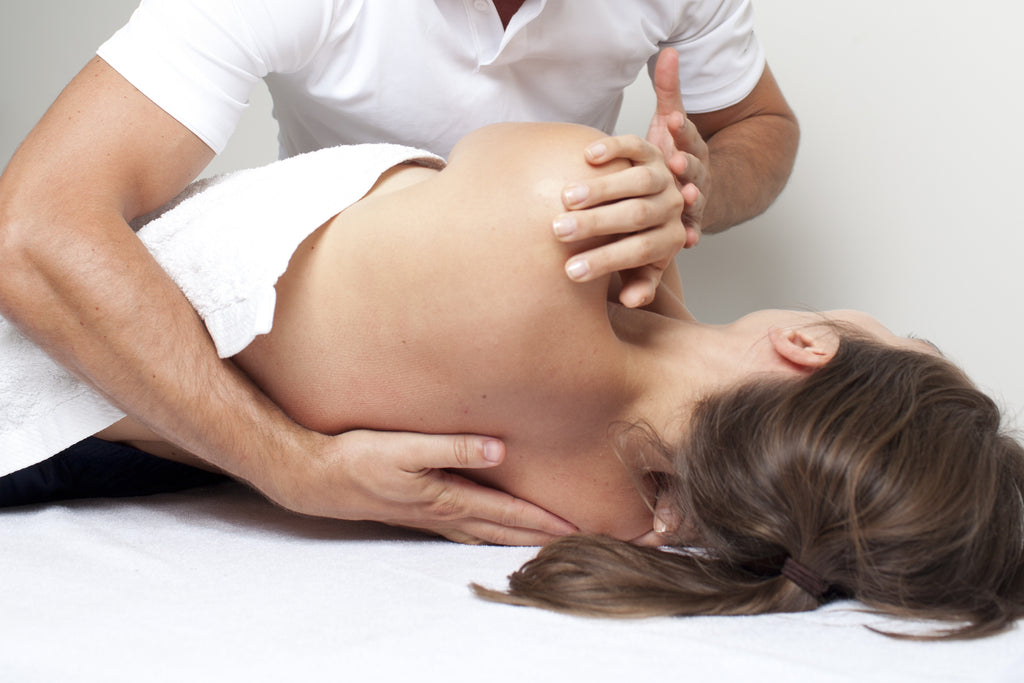Glutathione is often referred to as the “mother of all antioxidants”, serving as one of the main molecules to maintain health and prevent the development of chronic disease. It is produced naturally in the body as an assembly of 3 amino acids – glycine, cysteine and glutamine.
Resources
-
-
Osteopathy Tune-Ups: a key to healthy living
Holistic treatment such as osteopathy can be a key factor in maintaining general health and well-being, preventing injuries before they happen. -
Acupuncture and the small Intestine
In the traditional chinese medical system, the small intestine is much more than just its physical traits. TCM pairs energetic meridians so that they form a complete circuit. The small intestine is paired with the heart meridian, Imbalances in the small intestine meridian can lead to problems such as abdominal pain, digestion issues and also appetite problems like overeating or poor appetite. The small intestine meridian starts at outer tip of the pinky finger and runs up the arm, over the scapula of the shoulder, up the neck and ends in front of the ear. The meridian pathway allows for it to be useful in treating not just intestinal and abdominal issues, but also things like earaches, TMJ, shoulder and neck pain.
In TCM, the small intestine plays both a physical and a mental role. The mental role of the small intestine is to separate the clear thoughts from the turbid ones, This is another way the small intestine is connected to the heart in TCM. The heart in this system is in charge of all of our mental heath. Clear judgement depends on the ability of the small intestine to separate the pure from the impure. When there is dysfunction in the SI, there may also be dysfunction in the mind.
-
5 Tips for Managing Intense Anxiety using Dialectical Behavioural Therapy Skills
Where you would employ your crisis survival skills and get through the situations (attending the meeting and writing the exam) without making things worse for yourself.
When you are experiencing high anxiety, your fight or flight system has been activated by your sympathetic nervous system. This is because your body believes it is under threat and goes into survival mode. The sympathetic nervous system is responsible for the adrenaline coursing through your blood, your elevated heart rate and feelings of anxiousness. By activating your parasympathetic nervous system, (the body system that calms the physical symptoms after they have been activated by your fight or flight response) you can reduce your intense feelings of anxiety.
The following 5 tips are skills that you can try the next time you notice your anxiety is extremely high:
1. Paced Breathing:
Deep breathing can trigger the effects of the parasympathetic nervous system. In order to do this, you want to focus on your breathing by taking a deep breath in through your nose as you feel your stomach expand with air, and breathe out through your mouth, feeling your stomach deflate. You want to stay focused on your breathing and if it helps, visualize yourself breathing in one colour and breathing out another. If you feel your thoughts starting to wander, simply bring them back to your breathing no matter how many times it takes. Picturing the different colours can help focus your attention.
2. Progressive Muscle Relaxation:
Sitting in a comfortable position, gently tense a small group of muscles at a time, working your way up from your feet, all the way to your head, while making sure you’re breathing. Gently tense your muscles and hold for 5-7 seconds and then release. As you release the muscles, note the difference between tension and relaxation while you release. There are many guided relaxations online that can lead you through this process.
3. TIP your body temperature:
This can be done by submerging your face in cold water or placing an ice pack between your eyes for 20 seconds. This simulates the dive reflex, a body system in mammals that functions to slow our breathing and heart rate to preserve energy. This system would kick in if we were to be submerged in cold water. The temperature skill helps us to use this biological function to our advantage. It tends to work quickly but provides a short window. It is usually best paired with another skill such as the ones mentioned below. (This should not be attempted by those with a heart condition or if they are taking any heart medication)
4. Distraction:
When you are feeling anxious, it is common to get fixated on something and have a hard time thinking about anything else. Distracting yourself by engaging in some type of activity can be very helpful in getting you through the situation and not act in a way which would have negative consequences. Choose something that you can get into that will act as a distraction such as: reading, watching TV, colouring, doing crosswords puzzles or calling a friend. Contribute by doing something nice for someone else that will take your mind off of what you are feeling. Change your emotions by watching a funny movie or listening to very upbeat music. Push away your anxious thoughts by counting backwards from 1000, listing your favourite TV shows and movies, or all the cities that start with the letter A. By focusing on listing things, it is hard to maintain and focus on your anxious thoughts.
5. Self-Soothe:
Do something that brings you comfort in the moment by pleasing your 5 senses. Take a bath, smell some scented candles, look at pictures of your pet or loved ones, listen to soothing or calming music, or eat something you really enjoy savouring every bite.
Often it is the combination of these skills that are most effective. It is also important to note that these skills do not solve the reason why you are anxious, they are simply tools for reducing your anxious feelings in the moment. The best way to figure out which work for you would be to try with them and see which give you the best result.
Source: DBT Skills Manual for Adolescents (Rathus & Miller).
Please contact the clinic for a complimentary consultation with Sharon to find out more about how psychotherapy can be helpful for you.
-
Muscle Diary: Article 1. April 2017
Types of muscle: SKELETAL MUSCLES make up 1 of 11 entire body systems, composed of 600+ muscles, which together account for ½ our body weight. CARDIAC MUSCLE refers directly to the heart. SMOOTH MUSCLE consists of the gut, arteries, veins and muscles of the eyes. Cardiac and Smooth muscles are influenced by the Autonomic Nervous System, which simply means we do not consciously utilize them.
This Muscle Diary is concerned primarily with Skeletal Muscle, which is governed by the Somatic Nervous System, of which is consciously and reflexively controlled. We will address aspects of mechanical and physiological function as it pertains to everyday living/exercise as well as importance/relevance to remedial care, i.e.: Manual Medicine Practitioners/Trainers/Coaches/You – knowing yourself and what you’re made of and how you work.
Some of the more common and relevant skeletal muscles discussed readily in Manual Therapy:

What is Skeletal Muscle?
- Actin and Myosin, contractile proteins, form sarcomeres.
- Sarcomeres are the smallest functional unit of a Skeletal Muscle. Many sarcomeres form a myofibril.
- Many myofibrils form a muscle cell/fibre.
- Many muscle fibres form fascicles. Fascicles are arranged in neat: circular, convergent, parallel, and pennate forms.
- Many fascicles make a muscle belly. Some Skeletal Muscles have multiple bellies, like the bicep which has 2, tricep-3, quadricep-4. Each muscle belly is manually/palpably distinguishable.

How does Skeletal Muscle Function?
Skeletal Muscle Contraction: Once an action potential travels down a nerve to the end-bulb at the synaptic cleft, where the nerve meets the muscle, calcium ion channels open allowing calcium to flow into the end-bulb of the nerve, creating a more positive environment on the inside of the nerve fiber forcing its’ vesicles to release acetylcholine (neurotransmitter) into the synaptic cleft. Acetylcholine binds to the ligand-gated ion channels of the muscle where sodium is then able to rush in to the muscle fiber causing a muscle contraction! (Recall the actin and myosin mentioned above – the contraction happens here, in the sarcomere – the functional units of a muscle fibre). After this happens, acetylcholine detaches from the ligand-gate, where an enzyme comes to recycle it and sodium rushes out of the muscle fiber and remains in the synaptic cleft until another action potential calls upon it. Therefore, there are little pools of metabolic constituents (acetylcholine, sodium, calcium, etc) always hanging around waiting to do work.
Why is this Important?
Action potentials are voltage-gated, where as ligand-gates are chemically initiated. There are also mechanical-gates which Massage/Manual Therapy/exercise exploit in order to achieve specific goals. This understanding leaves us with 3 areas for issues to arise, altering function and perhaps requiring you to seek therapy. 1. Mechanics is structural injury to the muscle itself (mechanical-gates). 2. Nerve conduction may be structural or metabolic affecting voltage gates. 3. Metabolic issues of consumption/blood origin (ligand-gates). Manual Therapy can provide as passive aid, influencing any and perhaps all of these gates in the function of movement..
Furthermore, uniformity in contraction is important, spreading load evenly throughout a field of biomechanical play. If this is not possible the body will adapt to provide the next best way. Sometimes our muscle fibres will grasp one another tightly in attempt to retain function. When this happens we feel it as a knot or hypertonic point. If when pressed that knot refers discomfort or pain to an area other than its own, this is a Trigger Point. Manual Medicine, like exercise, helps prevent knots, maintain load dispersal increasing the adaptive potential of body tissues. Through therapy/exercise there is micro tearing of the tissue. As a result angiogenesis ensues – building of new blood vessels in a process of meta-routing blood to heal the area. This is an adaptive process. This process may cause discomfort, as we often feel after physical exertion and sometimes after a Manual Therapy session. Hence the phrase, “No Pain, No Gain”. Conversation with your therapist, experience with proper exercise, will aid you in distinguishing between therapeutic pain/discomfort opposed to unwanted pain/discomfort.
Awareness in biomechanics (form) allows us to micro tear (destroy) and promote (help build) appropriate lines of tension, both actively through activity and passively through therapy. This makes form during exercise and awareness/knowledge from your therapist necessary. In addition, this also makes stretching, strengthening, and cardiovascular maintenance equally important. Stretching ensures mutual communication between muscle fibres preventing knots, strengthening feeds the muscle fibre amplifying its capacity for power generation, and cardiovascular exercise ensures adequate food is available for muscle fibre function as well as maintains a healthy heart rate for all moments lived.
Stay tuned for more Muscle Diary - Bianca Anzovino – RMT, Acupuncture & Dry Cupping Provider @ Lemon Water Wellness. bnarmt@gmail.com
-------------------------------------------------------------------------------------------------------------------------------------------------------------------------------------------
FUN FACT: There are tiny muscles that allow our hairs to stand up in the effect of giving us “goosebumps” – Erector Pili are their names.
----------------------------------------------------------------------------------------------------------------------------------------------------------------------------------------
At 9 Mill St. we want you to understand, in the best way we know how, what you are made of and how to take the best care of you and your friends and family. We learn from your questions, so drop by/book in! -
When life give you Lemon Water
Through its holistic outlook on healing, Lemon Water Wellness provide its patients with a newfound zest for life.
Check out the featured article in the latest version of The Hub.






